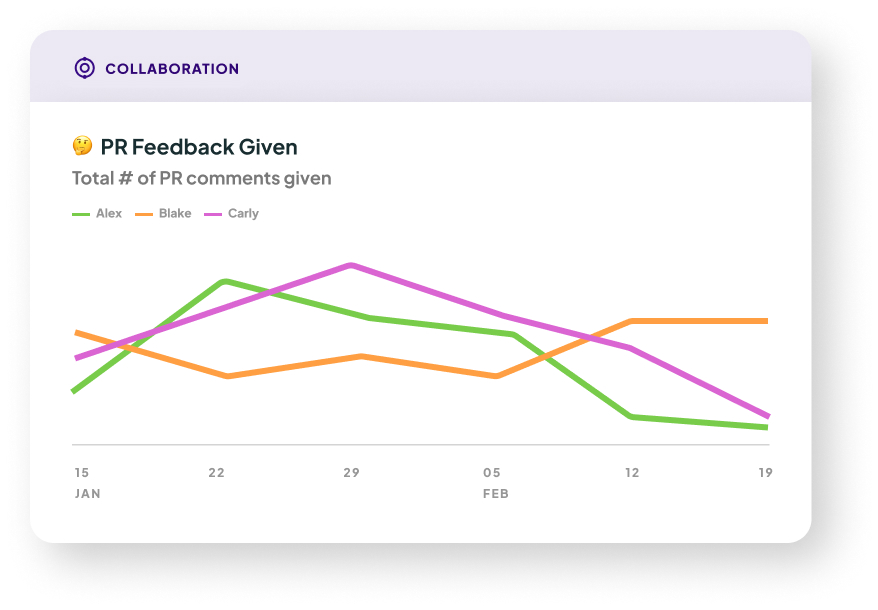PR Feedback Given

What it is: The number of comments written on PRs.
Why it matters: This visualizes who is giving the most support, since PR reviews and comments are a way to share knowledge and to encourage growth and learning opportunities. Giving feedback on PRs can be an example of glue work, the somewhat-invisible work that people do to lift up others on the team; our goal is to make this work more visible and valued on teams.
How we calculate it: The total number of comments written on PRs, including comments on one's own PR. We include comments on your own PR because they are often in response to a reviewer question, so these can also contribute to learning and knowledge-sharing on the team.
What good looks like
While written communication styles differ between individuals, if a team that does their code reviews on GitHub, then 10 comments per person is a good benchmark to hit. This is based on research from our own data, looking across 6 person-weeks of data for 10 randomly sampled orgs in the Multitudes dataset.
Last updated
Was this helpful?

